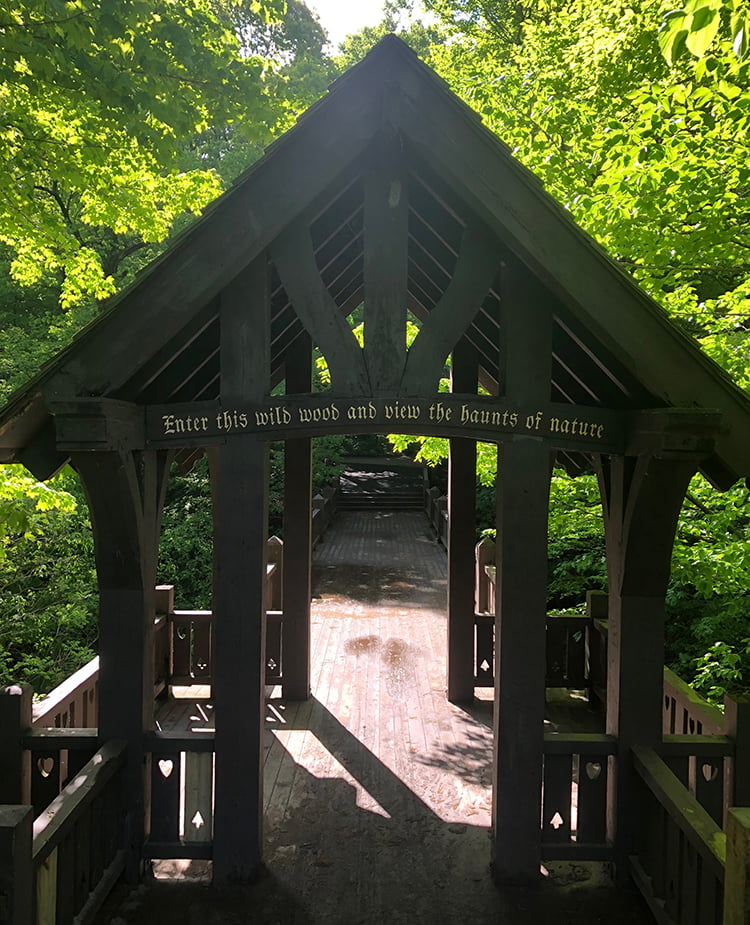Some places come and go, while some places become icons. Mandatory Milwaukee is all about the latter. Join us as we revisit beloved and well-worn local staples with fresh eyes, and explore how they might figure in the city’s future.
This weekend, South Milwaukee will pay homage to Reggie “Da Crusher” Lisowski during a two-day CrusherFest celebration that will include the unveiling of a full-sized bronze statue made in the legendary pro wrestler’s likeness. While the city’s most famous resident is synonymous with the hard-nosed suburb’s industrial reputation that dates all the way back to when a manufacturing corporation called Bucyrus-Erie moved its headquarters to the year-old municipality in 1893, South Milwaukee is also known for its natural wonders.
At a whopping 381 acres, South Milwaukee’s Grant Park is the county’s second largest park. Within its bountiful borders, visitors will find a pristine beach, Milwaukee County’s first public golf course, and a century-old slice of scenic serenity known as Seven Bridges Trail that arguably offers some of the most gorgeous views in metro Milwaukee. Tucked in the sprawling park, a semi-secluded wooden structure greets hikers at the trailhead with a sign that reads “Enter this wild wood and view the haunts of nature.”
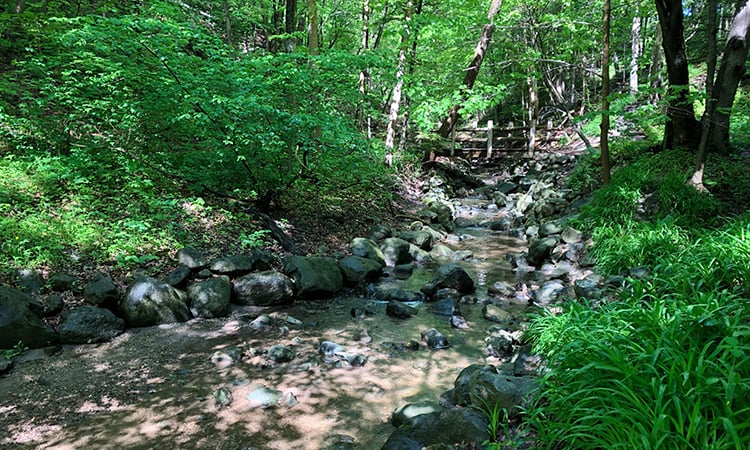
Though the wooded ravine it honors is much older, Seven Bridges dates back to the early 1900s when Frederick C. Wulff, the first Superintendent Of Horticulture for the park system, worked to develop paths that would be the beginnings of the trail. Wulff is also said to have introduced non-native plants and trees to the parcel of land. In the 1930s, at the height of The Great Depression, a group called Wisconsin Conservation Corps developed the natural amenity by adding some subtle man-made accents like lannon stone paths, staircases, and the attraction’s eponymous footbridges.
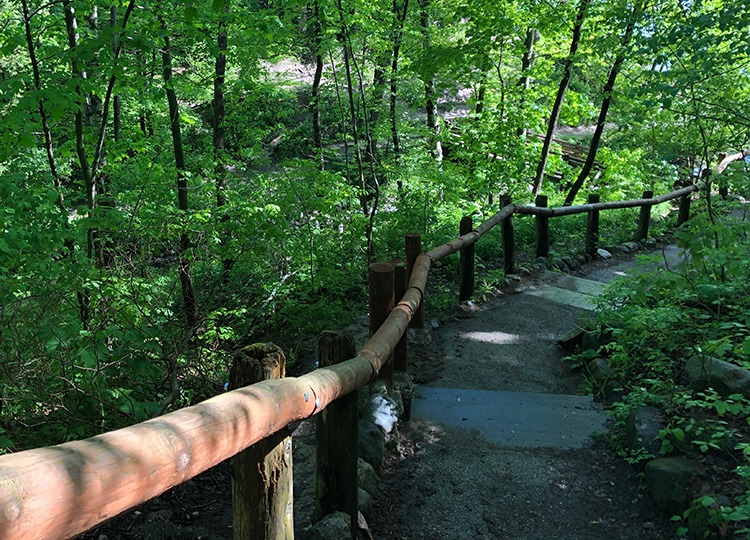
In the decades that followed, the condition of Seven Bridges reportedly declined significantly, and the area was visited far less than it was during wartime. Fortunately, a small group of Conversation Corp members returned to the site in the mid-90s to tend to it and add updates in the form of wooden barriers, a few new bridges, and other improvements to help restore the neglected ravine to its past glory.
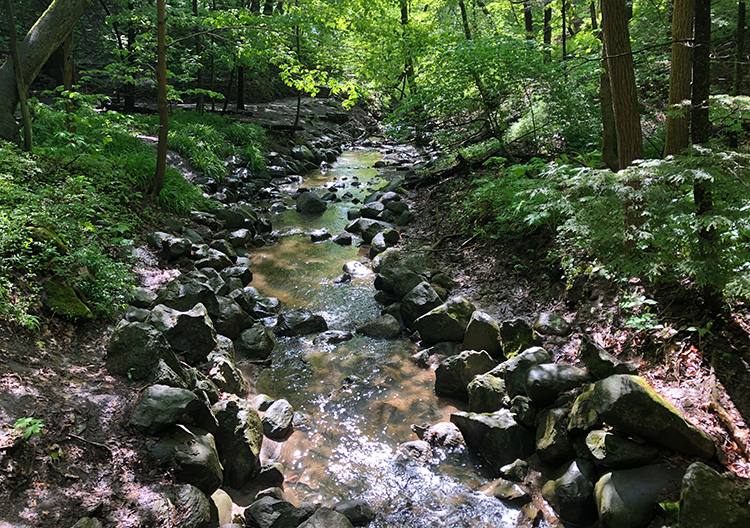
Today, Seven Bridges Trail is beautiful, breathtaking, and a tranquil place where one can momentarily escape sounds and stressors of day-to-day life in the state’s most populated county. The heavily-wooded ravine is cut in twain by a winding brook that babbles centuries of soothing secrets to anyone who cares to listen.
The flowing water and the chirps of migratory birds vie for attention, as does the striking scenery that consists of flora, small woodland creatures, and pristine views of the forest from either 100 feet above or below (depending on where you’re standing).
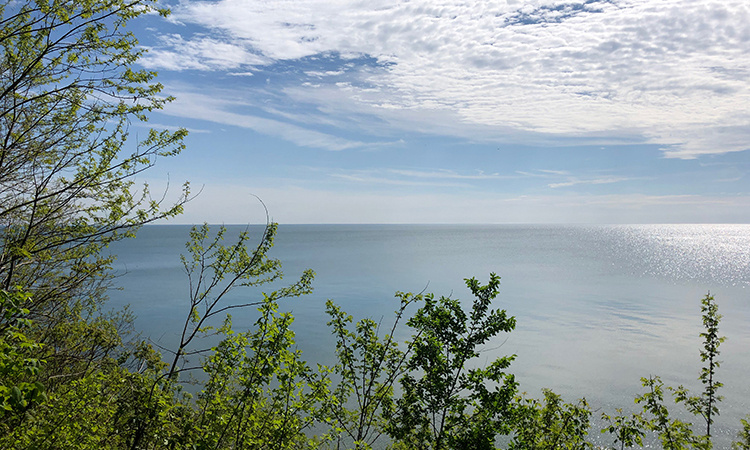
Though there’s no real organization to the network of trails, clearly marked paths and Seven Bridges’ limited acreage makes to difficult to get lost—at least in the literal sense. Glorious glimpses of Lake Michigan in the upper level and Hobbit-like scenery within the depths of the ravine, however, make it easy to lose track of time as the natural immersion clears the mind and misplaces worries.
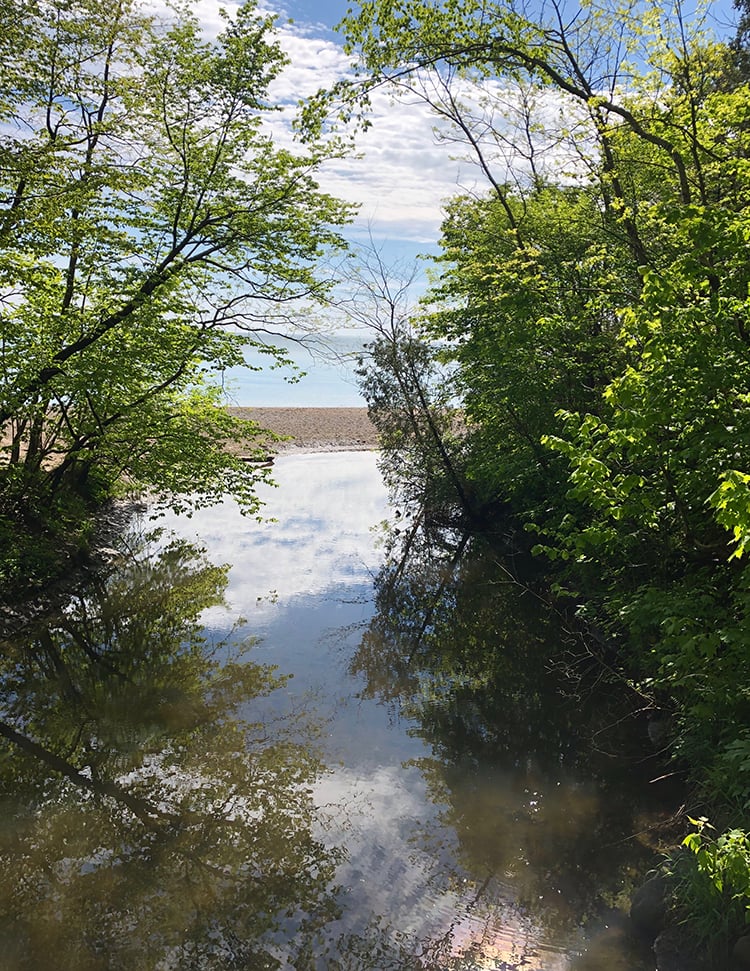
Seven Bridges also gives hikers direct access to Grant Park Beach as the brook flows directly into Lake Michigan.
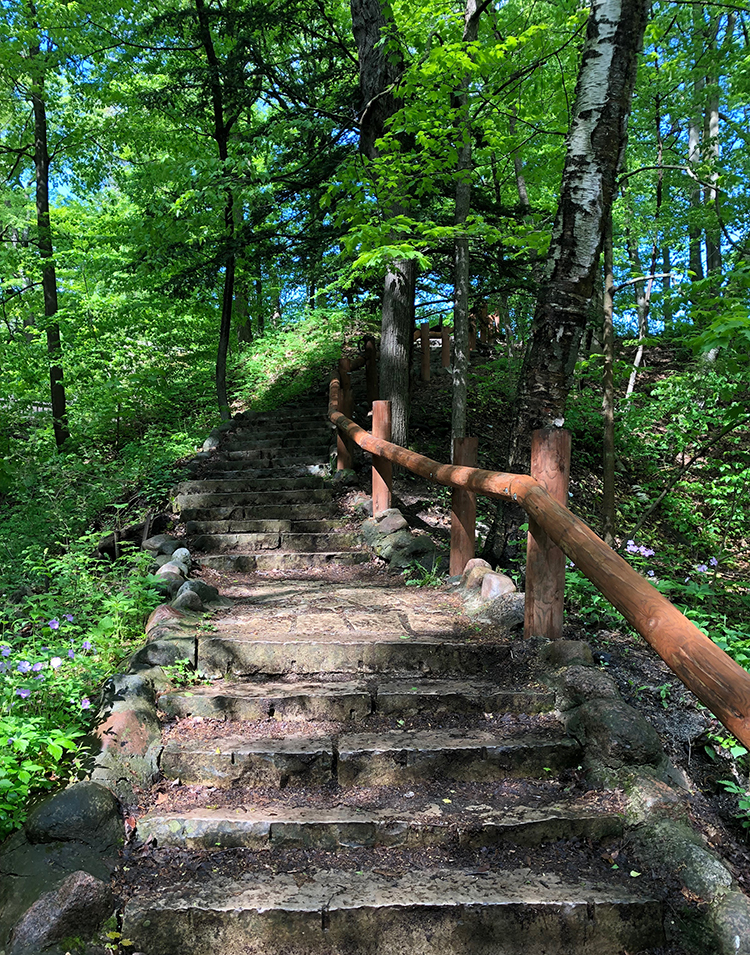
Visitors could traverse most of the trail over their lunch break or, if the mood strikes, you could spend a full day taking in the sights and sounds Wulff and a dedicated group of conservationists helped to preserve. No matter how long you’re there, a trip to Seven Bridges is sure to leave you refreshed, restored, and prepared to withstand the demands of the world that exists when you pass over the bridge and through the wooden covering at the trailhead once more.
